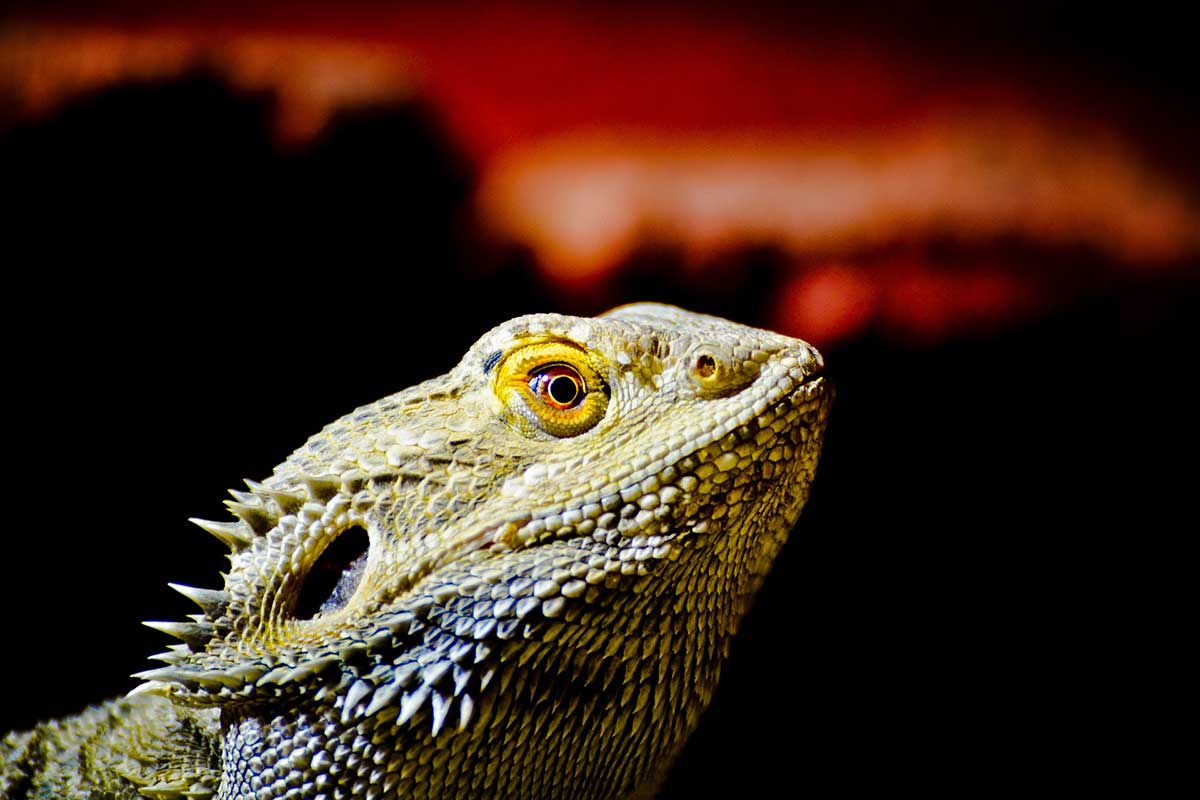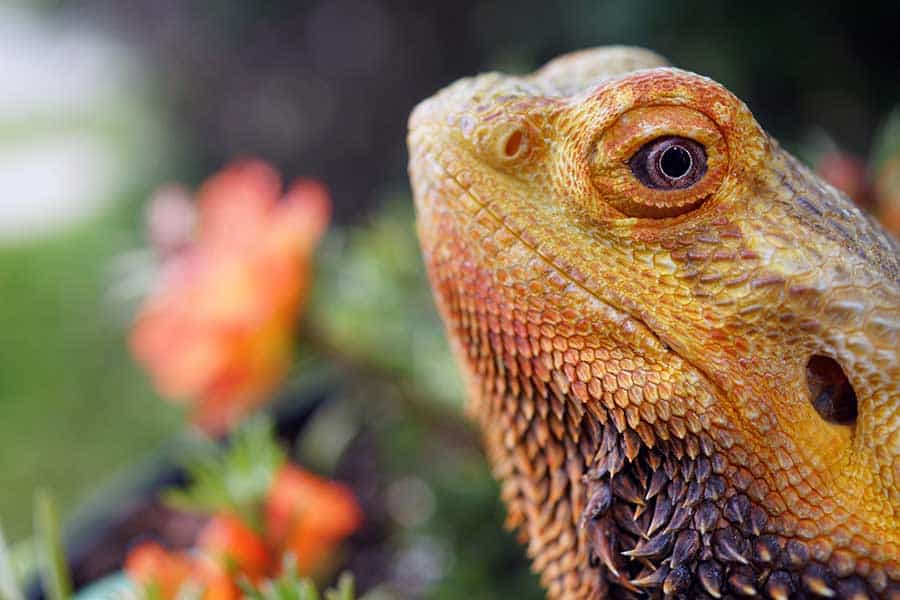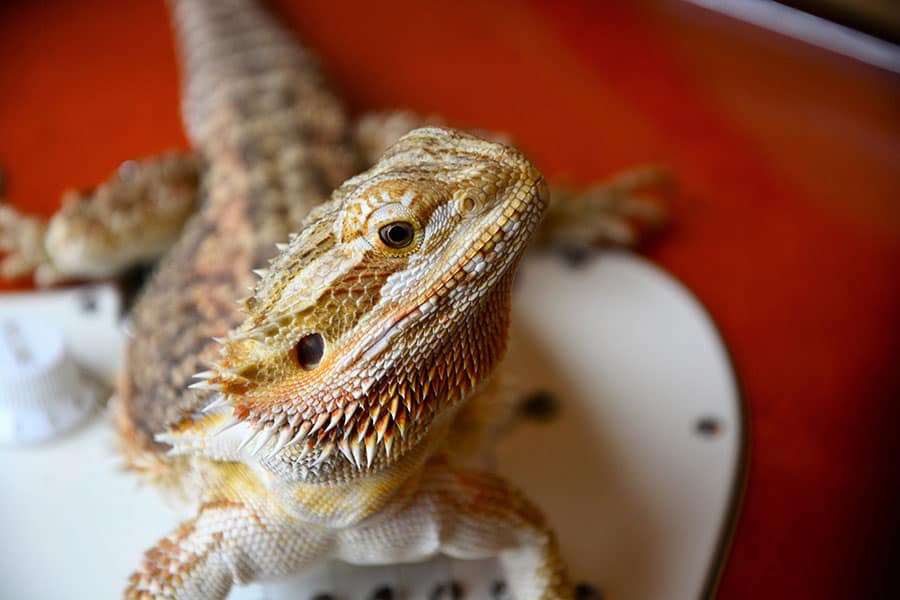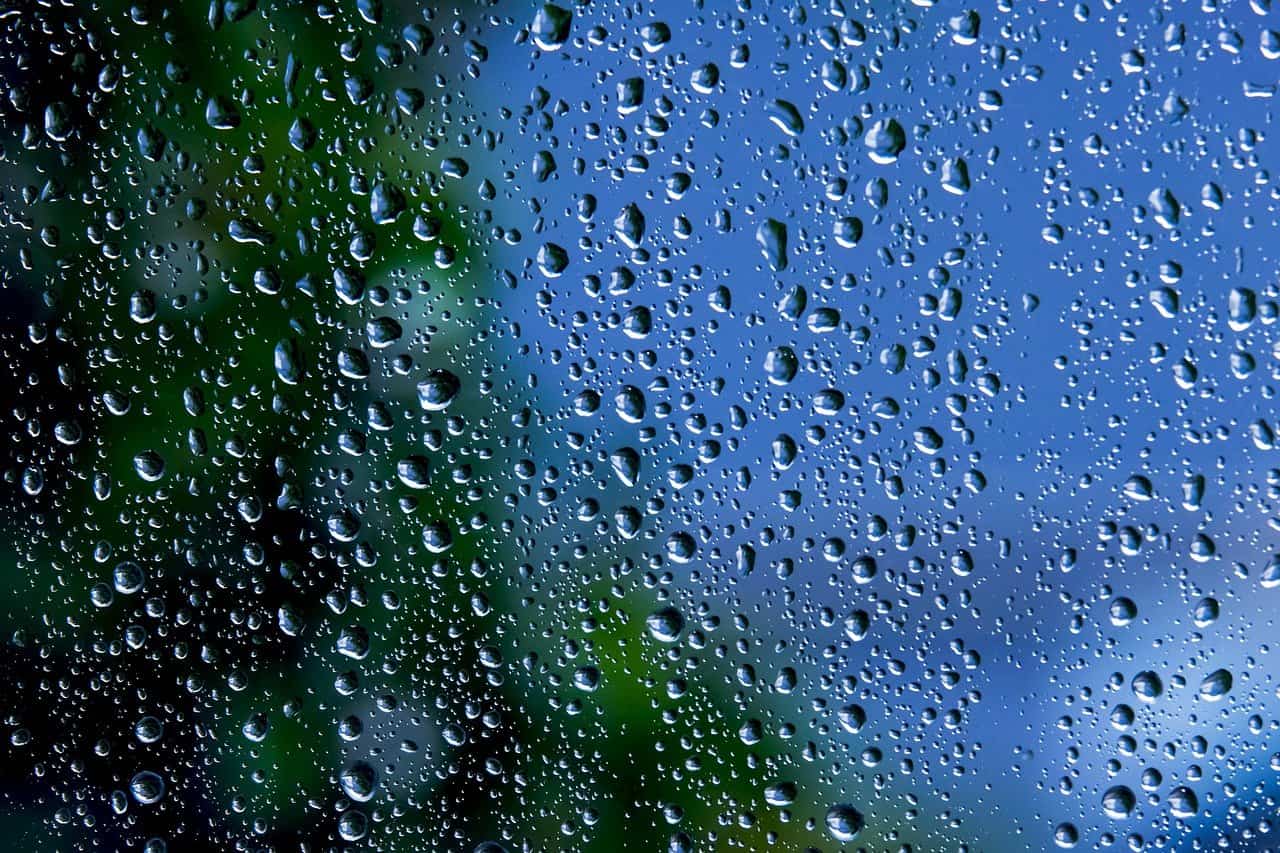
Bearded dragon dehydration may not be something you’ve given much thought to. After all, your bearded baby is angular and scaly, so you’re less likely to notice if their skin gets a little dull and loose. However, dehydrated bearded dragons are at increased risk of illness and death, so it’s important that you keep an eye out.
Climate and diet are the main factors that influence dehydration in bearded dragons. Depending on how dry or humid their environment is and what kind of foods they have access to, a bearded dragon can be at risk of becoming dehydrated. Certain health issues can affect hydration levels, too, such as illnesses or the presence of parasites.
Read on to learn more about dehydration in bearded dragons and how to resolve this issue. You’ll also learn how to avoid it in the first place as well as a special tactic to help you bond with your dragon while keeping them healthy, hydrated, and regular.
How To Spot A Dehydrated Bearded Dragon?
We must pay close attention to their behavior and physical appearance. One key indicator is their skin.
If you notice their skin looking wrinkled or dry, it’s a clear sign of dehydration. Additionally, keep an eye on their eyes. If they appear sunken or dull, it’s another red flag.
Another important clue is their behavior. A dehydrated bearded dragon may become lethargic, with a lack of energy and appetite.
How Much Water Does a Bearded Dragon Need?

Of the eight known species of bearded dragons, most are found in arid, semi-arid, and subtropical regions. These areas are relatively dry, both in terms of rainfall and organic water bodies. As a result, bearded dragons have evolved to need minimal amounts of water, though too little water can still seriously harm them, particularly captive beardies.
The exact amount of water your bearded dragon needs to stay healthy depends on their age, weight, and living conditions. On average, an adult bearded dragon weighs 300 g to 500 g (that’s about 0.6 lbs to 1 lb). So, for every pound of body mass, your beardie needs 5 ml to 15 ml per day.
For most dragons, this comes out to anywhere from 0.1 fluid ounces to 0.5 fluid ounces each day. You can use the growth chart below to estimate how much water your bearded dragon needs. Keeping a water journal, a food journal, and a poop journal is a helpful way to monitor your beardie’s levels of health and hydration.
These tiny amounts of water can be difficult to measure, so it can help to use a syringe or teaspoon to measure and get a better idea of the exact daily amount your beardie needs. Pour the pre-measured water into a small dropper or spray bottle (or just use the syringe).
This way, you can offer the correct amount of water to your beardie throughout the day, whether it be through misting, offering water directly, or leaving it in a water dish for them to freely drink from, depending on their preferences.
Is Your Bearded Dragon Dehydrated?
Most pets (and humans, too) will drink water after meals. However, the ancestral DNA of bearded dragons has arid, semi-desert roots, which means there aren’t many water bodies in their natural habitat. They mostly get water from their diet in the form of succulent leaves, fruits, and small animals.
If your beardie doesn’t actively seek water for prolonged periods, it can affect their body both internally and externally.
On the outside, dehydration can cause long-term problems like shedding issues, loose-looking, dull skin, and decreased appetite and energy. Inside, it can damage your beardie’s kidneys, digestive tract, and circulation pathways.
Illness and parasites can contribute to dehydration as well, as sick dragons require more water to heal and stay hydrated. Untreated diarrhea – a common sign of parasites and other illnesses – can also contribute to a lack of fluids.
Another common cause of dehydration in bearded dragons is a lack of moisture in their diet. Certain insects contain more moisture than others; for example, crickets contain more than mealworms and waxworms. Certain fruits and vegetables have more water in them than others, too. If your beardie isn’t eating a lot of moisture-rich foods, they are likely at least mildly dehydrated.
You will also need to know the signs your bearded dragon is dehydrated so you know when to make adjustments to their habitat and diet. These may include:
- Loose skin
- Sunken eyes
- Sunken fat pads around the eyes
- Stringy saliva
- Visible wrinkles
- Lack of energy
- Slower movements
- Less urate in their poop
- Lethargy and sluggishness
- Refusing to eat or poop
More specifically, a dehydrated bearded dragon will have lots of loose skin that isn’t very elastic. To check the elasticity of your beardie’s skin, gently pinch the skin on their back and pull it upward slightly.
If the skin instantly retracts, this is a good sign that the lizard is properly hydrated. However, if it stays sort of stuck up and stiff before eventually shifting back to its original position, this is a clear sign of dehydration. This is because as your beardie’s body loses water, their skin cells lose water, too, resulting in dry, loose, and less stretchy and elastic skin.
If your pet has presented any of these symptoms, it’s likely time to make some adjustments to their habitat and diet to get their hydration levels up.

How to Hydrate Your Dragon
You can’t control the weather, but you can monitor and control the conditions inside your home and your bearded dragon’s
There are five main ways to ensure your bearded dragon stays well hydrated:
- Water bowls
- Misting
- Syringe Feeding
- Drop feeding
- Bathing
For some dragons, you can also directly offer them teaspoons of water around feeding times, encouraging them to gradually sip from it. The other methods might need a bit of practice, though, so find what works best for you and your beardie.
It’s also helpful to feed your bearded dragon foods that have high water content. Juicy fruits, dark greens, and soft vegetables are a great source of hydration. If your bearded baby is more severely dehydrated or otherwise ill, you can puree the food into a saucy consistency for them to more easily sip from. Just don’t add sugar or sweeteners to the puree!
Using a Water Bowl

This is the typical method most reptile keepers use to offer water to their bearded dragons. However, keeping an exposed
If the humidity becomes too high in the enclosure, it could give your beardie respiratory problems.
So, if you do want a
If your bearded dragon is brumating, you’ll mostly keep the lights off. Still, you’ll need to watch the tank carefully so that anytime your bearded dragon pops out of their hide, you can offer them their water dish. Take the bowl out of the tank when your beardie finishes drinking if the humidity levels are too high.
Using a Misting Bottle

In a bearded dragon’s natural Australian habitat, there’s not much rain. Outside of monsoon seasons, wild beardies may only feel a light, foggy mist once in a while, especially in the more arid regions of the Outback. Bearded dragons are able to absorb a small amount of this water through their skin to keep them hydrated.
In captivity, you can easily replicate this environmental condition with a spray bottle with an adjustable nozzle. Simply spritz your dragon’s body and enclosure lightly with water a couple times per day.
The best option is a cosmetic spray bottle, since they come in smaller sizes. Additionally, nowadays there are plenty on the market that are specifically designed for use with lizards and other reptiles.
There are a couple different ways you can mist your dragon’s enclosure and surroundings.
First, you could spray the water over the beardie’s body so they can feel that nice, cool mist and absorb some of the water through their skin and lick it off of their nose and mouth. Next, you can mist their food directly – especially leafy vegetables – and they can drink the droplets together with their salad.
When your beardie is brumating, you can wait for them to pop their heads out then mist it. Or you can do a general spritz around their hiding spot for some atmospheric moisture.
The idea is to offer hydration without making the tank visibly wet or too humid. If you can see the moisture forming puddles with your naked eye, you’re probably giving them too much water.
Finally, as you prepare and set out your beardie’s meals, check that at least one portion is a juicy fruit and/or a succulent live worm with a decently high amount of moisture.
Using a Syringe

You can buy a simple liquid syringe over-the-counter at many pharmacies. Additionally, some reptile multivitamins come with syringes and measuring cups that you can keep and reuse. Syringes are the most accurate hydration option because you can calibrate and serve water in more precise measurements.
Unfortunately, though, working with a syringe while holding your bearded baby can be tricky. You may need extra hands! You have to be careful to push the water into their mouth and down their throat without choking them. And without too much water dribbling out of the sides of their mouth.
This option is best for more severely dehydrated or ill dragons. Otherwise, your beardie is probably able to get enough water simply from misting and their diet alone. Still, it’s a good option to have available if for whatever reason your beardie is refusing to drink on their own without some help.
This may seem daunting, but your vet, breeder, or pet store staff can show you how to use a liquid syringe properly.
If you’re still too uneasy with getting the syringe directly into your beardie’s mouth, use the syringe to put water drops on their nose or on their food. This way, you still offer the right amount of water, but the process of doing so will be less stressful for both you and your scale baby.
Using a Drop Feeder

This method is quite similar to using a liquid syringe, though it isn’t quite as complicated (or precise). Buy a small water dropper such as an eye dropper. Measure out roughly the recommended amount of water your dragon needs for the whole day, then use the dropper to offer them a few drops at a time throughout the day, either directly on their nose and mouth area or on their food.
If they particularly enjoy being handled, you can snuggle your dragon when they’re in a friendly mood and give them water with the dropper that way.
It helps to offer them water when they’re calm because they won’t fidget or move around as much while you hold them, making it easier to get the water in and around their mouth. This will be a lot harder if they’re feeling restless and wriggly.
If your bearded dragon is comfortable with taking liquid supplements, you can re-use the bottle with its included dropper for water.
Liquid
Bathing Your Bearded Dragon
Bearded dragons ingest most of their water, but they can also absorb a little through their skin. Plus, bathing a bearded dragon calms them and can ease some of the symptoms of dehydration, such as constipation/impaction, dry skin, refusing to eat, or refusing to poop.

Put three to four inches of warm water in a shallow trough or bathtub and let your bearded dragon stand in it. They should be elbow-deep, but their heads should never sink under the water. Splash water over the beardie’s body and massage their tummy.
Be sure to look out for poop! The warm water will likely encourage your beardie’s bowel movements; this is normal. Remove the waste material and change the water if this occurs.
Baby bearded dragons can be bathed every day or two, not just for hydration, but also to help with their frequent shedding. Bathe your juvenile once a week and your young adult roughly twice a month.
Once they’re fully grown, you can bathe your dragon around once a month or so to give them a bit of extra hydration and bonding time with you. Although they shed less often, adults will still shed a few times a year, so it helps to schedule baths around shedding periods to help remove stubborn skin.
Other Ways to Promote Healthy Drinking Habits
To treat and prevent dehydration in the long term, your beardie has to learn how to actively seek water in captivity. Thankfully, most dragons pick up on this pretty quickly. You can help develop the habit by offering a water dish when you take your dragon out of its tank every morning or offering a few sips before you shut them in for the night.

Also, if your bearded dragon is prone to glass surfing, a few splashes of water on the glass could draw their attention to hydration, both encouraging them to be more active and to drink more water.
Remember, bearded dragons are attracted to movement. So if they see you spritzing water on the glass enclosure or on their food dish, they may be prompted to ‘chase’ the water and ‘hunt’ it so they can drink. You can also spray water on or stir the surface of their water dish to help grab their attention.
For example, after filling their
Another helpful tip for super-social bearded dragons is to splash water in your cupped palm and offer it to your dragon as you pet them with your other hand. If you already hand-feed your beardie, you can water them this way too.
Your main goal is to create a consistent habit where your beardie drinks without much extra assistance or encouragement.
FAQs on Dehydrated Beardies
Now you can spot a dehydrated beardie at a glance, and you have an arsenal of tools and skills to remedy the problem. Here are a few more questions you may have about getting your bearded dragon to drink more water.
Does gaping mean my bearded dragon is dehydrated?
Mammals pant when they’re thirsty. So, when you see your bearded dragon with their mouth open and their tongue out, you might make the same assumption. This phenomenon is called gaping and it probably means your dragon is overheating and/or their tank is too hot.
In mammals, this can lead to dehydration, because the animal will often sweat excessively and lose a lot of fluids. However, lizards don’t sweat, so overheating won’t necessarily result in dehydration. That said, you can still use a warm bath or a cool misting spritz to lower your beardie’s body temperature.
Can bearded dragons swim?
Beardies have a passing resemblance to crocodiles and alligators who are very strong swimmers, so it’s not an unreasonable question.
Bearded dragons are mostly land-bound reptiles, though some will swim in captivity if encouraged or offered a large body of water to splash around in.
They were originally discovered in Australia, where they mostly live in semi-desert and semi-tropical conditions. They don’t naturally exist on other continents and are unable to cross the oceans on their own, meaning they aren’t particularly strong swimmers.
During baths, make sure your bearded dragon’s head and neck are above the water line to avoid drowning since their claws will have zero traction. It is important to always monitor your beardie closely during bath time in case of any mishaps. Remember, just because bearded dragons can technically swim a bit doesn’t mean they’re experts at it!
Should I sweeten my bearded dragon’s water?
Your bearded dragon may be attracted to sweetened water because of that sugary smell. They might think you’re offering fruits and snacks, so they may come out and drink.
Unfortunately, sweeteners are often packed with calories and lots of other preservatives and ingredients not safe for bearded dragons in large amounts, so it’s best to avoid them. Also, excess sugar is bad for your bearded dragon’s teeth, so plain water is best.
What kind of water is suitable for bearded dragons?
For your bearded dragon, plain tap water is just fine – you don’t necessarily need to buy distilled, spring, flavored, mineral, or sparkling water, though some owners will opt for filtered water.
Is it bad if my bearded dragon drinks their bathwater?
As long as you’re bathing your scale baby in plain water (or with a shedding aid), the water is safe to drink. They’ll inevitably ingest a sip or two in the bath. So ensure the bathtub, sink, or tray is clean and disinfected with no traces of soap or detergents. Keep the water lukewarm.
Conclusion
In conclusion, when your bearded dragon is dehydrated, they may suddenly turn into a grumpy old man and display the following symptoms:
- Rheumy eyes
- Constant drooling and gaping
- Dragging themselves and dawdling
- Loose, wrinkly skin
- Weak muscles and seemingly painful joints
- Refusing to eat or go to the bathroom
Snuggle your bearded baby carefully and inspect their body closely to confirm if they are dehydrated. Give them a warm bath and follow with a soothing nose spritz. Use the tactics we mentioned above for treating dehydration: give them the occasional bath, mist their body and enclosure, and use a water dropper or liquid syringe if needed.
Dehydration is a scary problem with, fortunately, a lot of simple solutions. Keep up-to-date diaries detailing their feeding times, toilet habits, and hydration intake to more closely monitor your beloved beardie’s health.

